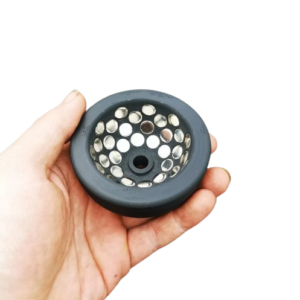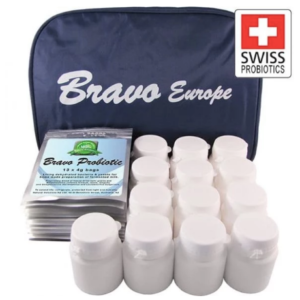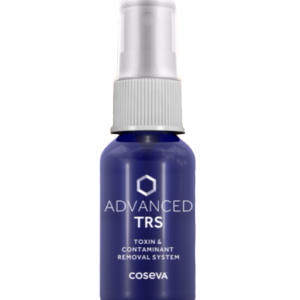Gabriela Segura, M.D.
Sott.net – Amazon links included
Thu, 12 May 2011 08:12 UTC
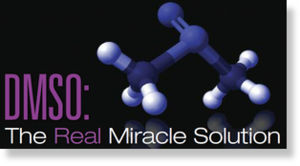
DMSO is the last part of the traditional MMS kit … it’s normally added at the end of making – however there is much more to DMSO than meets the eye!
DMSO is a solvent – it puts those hard-to-detox toxins into solution.
Viruses are also solvents – or exosomes – meaning they are the bodies chosen detox method. To many people this might seem counter intuitive, however if you use DMSO then you “will not need” viruses 😉 i hope you understand what i’m saying …. using DMSO is one of the most natural, non toxic ways to help your body do what it needs to do, to become healthy ….
In 1866, Russian scientist Alexander Saytzeff isolated a most curious and peculiar chemical compound. It was crystalline, odor-less, non-toxic and had a garlic-like taste when consumed.
At the time, Saytzeff had no way to predict that his discovery was going to prove highly controversial throughout its entire medical history, that it was going to be tested in thousands of studies and provide miraculous relief for numerous patients.
I’m talking here about dimethyl sulfoxide (DMSO), an organic sulfur compound which was used only as an industrial solvent, that is, until its medical properties were discovered in 1963 by a research team headed by Stanley W. Jacob, MD.
DMSO – Click Here is a by-product of kraft pulping (the ‘sulfate process’) which converts wood into wood pulp leaving almost pure cellulose fibers.
As industrial as it may sound, the process simply entails a treatment of wood chips with a mixture of sodium hydroxide and sodium sulfide, known as white liquor, breaking the bonds which link lignin (from the Latin word lignum, meaning wood) to the cellulose.
DMSO is useful as a pain reliever and also in burns, acne, arthritis, mental retardation, strokes, amyloidosis, head injury, scleroderma, it soothes toothaches, eases headaches, hemorroids, muscle strains, it prevents paralysis from spinal-chord injuries and softens scar tissues.
In fact, it is useful in well over 300 ailments and is safe to use. You might think that a compound that has so many alleged uses and benefits should be automatically suspect, so let’s have a close look at its properties and the data available and we’ll shed some light in this miraculous chemical.
Sulfur: The Stuff of Life
DMSO is an intermediate product of the global Sulfur Cycle which distributes bioavailable sulfur for all animal and plant life (Parcell, 2002).
Sulfur compounds are found in all body cells and are indispensable for life, they are needed for a number of chemical reactions involved in the detoxification of drugs and other harmful toxins, and they have potential clinical applications in the treatment of a number of conditions such as depression, fibromyalgia, arthritis, interstitial cystitis, athletic injuries, congestive heart failure, diabetes, cancer, and AIDS (Parcell, 2002).
Among the sulfur compounds, DMSO is probably the one that has the widest range and greatest number of therapeutic applications ever shown for any other single chemical. It has around 40 pharmacological properties that may be beneficial in the prevention, relief or reversal of numerous diseases (Morton, 1993).
Someone complained to Dr. Jacob of a splitting headache and gave him permission to apply some DMSO after hearing of its capabilities. The headache was gone in minutes, came back in four hours, and left for good after DMSO was applied a second time. Used for one purpose, sometimes it did another; put on a cold sore, within a few hours it cleared up a woman’s sinusitis. A woman who had had a stroke found after DMSO was painted on her painful jaw that she could now write with her paralyzed hand and could walk better. (Haley, 2000)
Therapeutic Properties
DMSO – Click Here is an effective pain killer, blocking nerve conduction fibers that produce pain. It reduces inflammation and swelling by reducing inflammatory chemicals. It improves blood supply to an area of injury by dilating blood vessels and increasing delivery of oxygen and by reducing blood platelet stickiness.
It stimulates healing, which is a key to its usefulness in any condition. It is among the most potent free radical scavengers known to man, if not the most potent one. This is a crucial mechanism since some molecules in our bodies produce an unequal number of electrons and the instability of the number causes them to destroy other cells. DMSO hooks on to those molecules and they are then expelled from the body with the DMSO.
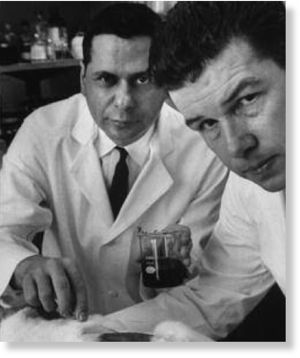 Dr Stanley Jacob working with DMSO in the 1960s
Dr Stanley Jacob working with DMSO in the 1960s
DMSO also penetrates the skin and the blood-brain barrier with ease, penetrating tissues, and entering the bloodstream.
Furthermore, DMSO protects the cells from mechanical damage and less of it is needed to achieve results as time passes as oppossed to most pharmaceuticals where increasing doses are required. It has a calming effect in the central nervous system and it reaches all areas of the body, when absorbed through the skin, including the brain.
That is, DMSO applied to one area often leads to pain relief in some other location due to its systemic effect.
It acts as a carrier for other substances or drugs and it also potentiates their effect. In fact, certain drugs dissolved in DMSO, such as corticoids, antibiotics and insulin, may be used in a lower dose than usual without reducing their therapeutic efficacy and in addition, their undesirable side effects are greatly diminished. Also, drugs are able to pass through the blood-brain barrier which is usually impenetrable.
DMSO promotes the excretion of urine and functions as a muscle relaxant. It boosts the immune system, increasing the production of white cells and macrophages that destroy foreign material and pathogens in the body. It also has anti-bacterial, anti-viral and anti-fungal properties.
DMSO also increases the permeability of cell membranes, allowing a flushing of toxins from the cell.
DMSO has radioprotective properties against lethal and mutagenic effects of X-rays in cells, cellular systems and whole animals. It also has cryoprotective properties, meaning that it is capable of protecting against injury due to freezing.
DMSO has also been shown to have cholinesterase properties (Sams, 1967), in other words, it inhibits an enzyme from breaking down acetylcholine, increasing both the level and duration of action of this important neurotransmitter.
Acetylcholine is responsible for learning and memory and is also calming and relaxing. Acetylcholine is also a major factor in regulating the immune system, acting as a major brake on inflammation in the body.
As a source of sulfur, DMSO aids in heavy metal detoxification. Sulfur binds with toxic heavy metals (mercury, lead, aluminum, cadmium, arsenic, nickel) and eliminates them via urination, defecation and sweating.
FDA and Big Pharma Obstacles
DMSO- Click Here is sold in health food stores, mail-order outlets, on the Internet, and in most countries around the world.
It is used by millions for its health benefits yet in the U.S., DMSO has FDA approval only as a preservative of stem cells, bone marrow cells, and organs for transplant, and for interstitial cystitis – a painful inflammatory condition of the bladder which is very difficult to treat with other therapies.
That DMSO has not found favor as a remedy for other medical conditions is partly due to the inability to test it in double-blind experiments.
Blind studies, as the name suggests, requires that a study be done without knowing which patient is taking the placebo or the drug. In the case of the DMSO, a blind study is impossible since the peculiar garlic-like taste and smell (no matter the route of application) gives it away and no satisfactory placebo could be devised that would mimic this particular effect of DMSO (Steinberg, 1967).

The FDA and ‘big pharma’ would prefer we remain dependent on their drugs,
If you search for DMSO on the U.S. National Library of Medicine (pubmed.gov), you’ll get almost 30,000 indexed results, making it one of the most studied compounds of our time.
Yet, we are led to believe that DMSO can’t pass the required regulations for its approval in other medical conditions even though its effectiveness and low toxicity profile is unquestionable.
You see, DMSO is a common chemical that can be manufactured cheaply. No drug company can get an exclusive patent since it is also a natural compound, therefore there is no significant financial return.
In fact, an executive of a major drug company is quoted as saying,
“I don’t care if DMSO is the major drug of our century and we all know it is, it isn’t worth it to us” [CBS TV show 60 minutes with Mike Wallace, The Riddle of DMSO].
If DMSO were to be approved by the FDA, it would be competitive and drug companies would be unable to hold the patents. In the words of the director of the Bureau of Drugs of the FDA, J. Richard Crout, M.D., “DMSO is a low toxicity and safe compound (…)
I think that it is a fact of life that drug companies are not going to invest in something unless they think there is some financial return” [CBS TV show 60 minutes with Mike Wallace, The Riddle of DMSO].
Despite restrictions on the use of DMSO, thousands of Americans purchase it on the ‘black market’ each year, its popularity due not to publicity, but rather ‘word of mouth’.
When you have something that relieves all kinds of ailments, including some life-threatening ones, people naturally recommend it to friends and family!
In Perspective
In the 1960s, research with DMSO – Click Here on humans was temporarily halted after certain animals treated with DMSO were found to have changes in the eye lens.
Some of these changes resembled those seen in aging dogs (Gordon, 1967), but nevertheless, research was gradually restarted after no evidence was found of eye changes in humans.
As Daniel Haley reports in his book Politics in Healing: “Tests in rabbits, dogs, and pigs (but not humans) had shown some problems.
When quantities of DMSO equal to about ten times the maximum human dose were given every day over a period of six months, slight changes in the lenses of the animals’ eyes would result, enough to produce a slight nearsightedness.
This is the typical rough edged way pharmaceutical-sponsored-studies work, in attempt to find a toxic or adverse reaction at a certain concentrations to focus on.
They can then fabricate statistics and data that focus on mechanisms of action at toxic doses (much like the recent 2020 HCQ scandal) and publicize the scary story to the media who then help the pharmaceutical companies retain their profits and market dominance, it’s not cold conspiracy, it’s just business as usual.
The lens changes were not enough to cause dogs difficulty when running – they didn’t bump into things – and in some cases, the changes disappeared after the massive DMSO doses were stopped. In no test at that time or since has DMSO ever caused cataracts, either in animals or in humans” (Haley, 2000).
In fact, DMSO is effective for macular degeneration and retinal disease, both diseases of the eye.
This effectiveness was first discovered when patients with retinitis pigmentosa, a retinal disease, were taking DMSO for certain musculoskeleteal disorders. They sensed that their vision had improved and some had remarkable results (Morton, 1993).
As far as eyes are concerned, the evidence on DMSO is quite to the contrary. When several patients treated with DMSO for muscular problems reported to Dr. Jacob that their vision had improved, he sent them to Dr. Robert O. Hill, ophthalmologist at the University of Oregon Medical School.
Confirming the favorable changes, Dr. Hill began his own experiments with DMSO (after it was known that the lens changes did not happen in humans). His research showed drops of 50% DMSO to be effective in retinitis pigmentosa and macular degeneration, and presented a report on this at the New York Academy of Sciences symposium in 1971. (Haley, 2000)
In contrast, the number of medication-related deaths in the U.S. is estimated at over 200,000 a year, making medications the third or fourth leading cause of death (Pezzalla, 2005).
I would however personally put them in first place along with the reality of the first publicised studies in Iatrogencis, and not fabricated and hidden statistics of the more recent Iatrogenics studies.
Even common pain relievers called NSAIDs, examples of which include Advil, Motrin, Aleve and aspirin, account for an estimated 7,600 deaths and 76,000 hospitalizations in the U.S. every year (Tamblyn et al, 1997).
Taking this into consideration, it is safe to declare that DMSO is among the safest substances in the world today.
In fact, the classic test for toxicity -the LD-50 test – measures the lethal dose (LD) at which half of a group of test animals is killed. The LD-50 tests for aspirin and DMSO show that aspirin is seven times more toxic than DMSO (Haley, 2000).
Quick Guide and Ailments
DMSO is generally applied to the skin in a gel, cream, or liquid. It can be taken by mouth or as an intravenous injection, in many cases along with other drugs.
It has also been administered subcutaneously, intramuscularly, intraperitoneally, intrathecally, by inhalation, instilled into the eye, on the mucous membranes, and into the urinary bladder. Strenghs and dosages vary widely.
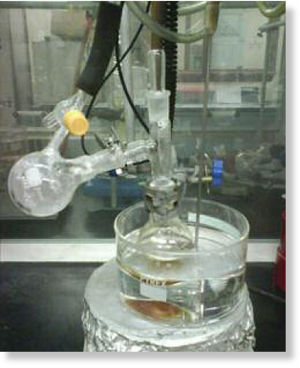 DMSO being distilled
DMSO being distilledIf you are just dealing with pain or an injury, use a topical application. Don’t drink it. Drinking it is for serious detoxing and other internal necessities. If you use a rose scented DMSO cream, chances are that nobody will be able to smell DMSO’s garlic-like smell.
Dosage
The usual oral dose of DMSO is one teaspoon per day of DMSO 70% (Morton, 1993). But since it can trigger detoxification reactions and DMSO’s total excretion from the body can take several days, it is best to do it only once a week.
Start with half a teaspoon of DMSO 50% and increase to
a teaspoon of DMSO 70% only if any possible detoxification reaction is well tolerated.
When you use liquid DMSO in the skin, let it dry for over 20 to 30 minutes before wiping the rest out. The skin must be clean, dry, and unbroken for any topical use of DMSO.
The face and the neck are more sensitive to DMSO and no higher concentrations than 50% should be applied there.
Topical concentrations of DMSO should be kept below 70% in areas where there is a reduction of circulation. When 60 to 90% DMSO is applied to the skin, warmth, redness, itching, and sometimes local hives may occur.
This usually disappears within a couple of hours and using natural aloe vera, gel or cream, will help counteract or prevent this effect. When 60 to 90% DMSO is applied to the palm on the hand, the skin may wrinkle and stay that way for several days.
“My brother put some DMSO gel (70% dmso, 30% aloe vera) on his shoulders and lower part of neck because he had muscle pain/soreness in that area, and it caused skin redness/irritation for a few hours, although it did diminish the muscle soreness as well…
my grandma has rheumatoid arthritis that made her legs swell up and hurt continuously, and I had her apply the same DMSO gel, and after about 2-3 days of applying it once a day, the swelling was 90% gone, and I think within 4-5 days it was 100% gone, and she said the pain diminished as well.” – Michael Shatskiy, Los Angeles, California, United States
Chronic pain patients often have to apply the substance for 6 weeks before a change occurs, but many report relief to a degree that had not been able to obtain from any other source.
In general, the greater the chronicity of the disorder, the longer the treatment with DMSO must be employed in order to achieve palliation (Steinberg , 1967).
Common health problems for which people will apply topical DMSO at home include acute musculoskeletal injuries and inflammations.
The earlier DMSO is used, the more dramatic the result. A 70% concentration of DMSO mixed with water in volumes ranging from 8 to 12 ml, applied on and around the injury in a wide area at least three times daily, will have a healing affect in 4 out ot 5 people.
Arthritis, Sprains, Strains
It provides rapid amelioriation of pain and increased mobility and reduction of inflammation when used topically. You can see a positive response within 5 to 20 minutes and usually lasting for 4 to 6 hours. (Steinberg, 1967).
“Applying DMSO where it hurt to a six-year-old wasted from rheumatoid arthritis, in a half hour the child could move her shoulder and turn her head for the first time in two years. Persuaded to try walking, she managed a few steps and then burst into tears. “Why are you crying?” Dr Jacob asked her. “Because it doesn’t hurt anymore”, she replied. (Haley, 2000)
“My brother has arthritis of the spine. He is in pain and bedridden more than half the time. When he is treated with DMSO, he is able to lead a normal, active life… Just one application of this cheap, safe DMSO changed my brother from a grimacing patient into an active, pain-free man in exactly 30 minutes!” (Haley, 2000)
June Jones, once quarterback and later coach of the Atlanta Falcons pro-football team, had a bursitis calcification in his right shoulder. His career almost didn’t happen as he could hardly lift his arm, let alone throw a football. But he was aware of DMSO and had used DMSO for sprains, like thousands of others. He received a shot of DMSO in the shoulder and after using DMSO for 30 days straight, the calcification disappeared. (Haley, 2000)
Stroke
Given soon after a stroke, DMSO can dissolve the clot that causes the stroke, restoring circulation and avoiding paralysis.
Once DMSO gets into the body either daubed on the skin, given in I.V., or by mouth, it permeates the body and crosses the brain barrier, so even taken orally it can improve circulation. Ideally it should be I.V.
Even though DMSO 40% causes a prolongation of bleeding time, it is still indicated for use in treating embolic or hemorrhagic stroke.
DMSO is superior to any other treatment for wounds to the brain where a great deal of bleeding is present (Morton, 1993).
One man who had a stroke at 7:30 AM refused to go to the hospital until after his wife had spoken with Dr. Stanley Jacob, which didn’t happen until 6:30 PM. Starting at 7 PM the day of the stroke, she gave him one ounce of 50% DMSO in a little orange juice every 15 minutes for two hours and then every half hour for two hours.
The next day, her husband was better and soon returned to normal. A substance that can stop a stroke as it’s happening is something many might want in their home medicine chest .(Haley, 2000)
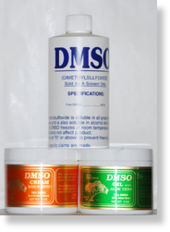
Angina, Heart Attacks, Injuries of the Brain and Spinal Chord
DMSO may help neutralize harmful effects on the heart and brain in medical disorders involving the head and spinal chord injury, stroke, memory dysfunction, and ischemic heart disease (Jacob, de la Torre, 2009).
A 40% DMSO solution should be administered within four hours to be effective, within ninety minutes is best.
After I.V. administration of DMSO, there is an elevation in the amount of spinal cord blood flow to the region of trauma. One of the first things that happens after spinal cord trauma is that a reduction of oxygen and blood flow sets in, inasmuch as the blood vessels constrict or shut down…
Without some treatment, the tissue swells. Eventually, this leads to paralysis. In a cerebral stroke, the animal will either become comatose or lethargic or die. With DMSO infusion immediately after injury (or stroke) all this is prevented. – Dr. Jack de Ia Torre, professor of physiology and neurosurgery at the University of New Mexico
Dr. Stanley Jacob has even given DMSO intravenously to people who were already paralyzed – paraplegics – and some regained use of limbs. One man, quadraplegic, recovered enough to go through college and then to work in a bank. (Haley, 2000)
Infections
When combined with antibiotics, DMSO will convert bacteria which are resistant to a given antibiotic to being sensitive to that same antibiotic and probably a 80 to 90 per cent solution of DMSO will be required in order to be clinically useful ( Pottz, Rampey, Benjamin,1967).
DMSO has been used to transport antibiotics to hard-to-reach areas of the body with excellent results, such as the bone marrow and brain (Sanders, 1967).
DMSO can dissolve a virus protein coating, leaving the virus core unprotected with its nucleic acid exposed to the immune system.
Applied topically, it alleviates the lesions that occur as a result of Herpes Zoster, shingles (Morton, 1993).
Placed into the nostrils or topically in the face, DMSO can open blocked sinuses within a few minutes and it has been used with sucess in patients with polyps (Marvin, 1967).
DMSO can clear up gum disease and reduce tooth decay and their pain by painting it on the involved areas.
“I have some pharmaceutical grade DMSO and I pour about two teaspoons in a glass in the evening, put my 20 mg of doxycycline in it, add about 2 teaspoons of distilled water, and then swish it around in my mouth for about 2 or 3 minutes and then swallow it.
So I guess it is about 50% solution. It’s really working on my mouth. That inflamed area of my jaw has calmed down about 70% in just a couple of days. Or more, actually. I expect it to be completely soothed by tomorrow after tonight’s dose of DMSO.” – L., Toulouse, France
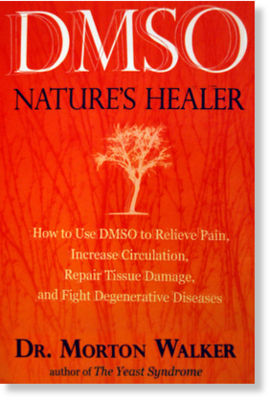 Several books have been published on the benefits of DMSO
Several books have been published on the benefits of DMSOKeloids, Scars, Burns, Bruises
A concentration of 50 to 80% put on two or three times a day will flatten a raised scar after several months. It is of considerable value in superficial burns (Goldman, 1967) and when applied quickly to an injury, it can eliminate any bruising.
“I have been applying it to my face for two weeks… I had a bout of acne in March, and this healed the damage pretty well but what amazed me is that my hyperpigmentation (melasma) has also faded very noticeably. In fact, it’s amazing!” – HG, United States
“I diluted a 50% solution and applied it topically to the inflamed lymph node. I applied it again this evening. I am totally amazed! There is a noticeable decrease in the size of the node, in just two applications! And it no longer feels matted. This node has been swollen for over 20 years!!! – Melissa Medlock, Coldwater, Michigan, USA
Podiatry
DMSO can be effective in the treatment of painful corns, calluses, ingrown toenails, bunions, hammertoes, heel spurs, and the inflammation of gouty big toes.
Varicose veins and thrombophlebitis
Topical DMSO can whiten telangiectasias, small dilated blood vessels near the surface of the skin. It can also decrease the size of varicosities in the legs and the inflammation that goes with it, along with a relief of their cramping discomfort (Marvin, 1967. Blumenthal, Fuchs, 1967).
Eye problems
One drop of a 25% DMSO solution (diluted in sterile physiologic or saline solution) once or twice per day is useful for eye problems, including cataracts or glaucoma.
“DMSO is amazing, I’ve also read various good results with using it in the eyes. Being the adventurous type myself, today I diluted DMSO down to 30% and put 2 drops in one of my eyes that has been having red spots around the iris.
The red spots diminished drastically. The only side effect was a slight burning sensation, similar to those drops you get when one goes for a glaucoma test, without the side effect of dilated pupils.” – DZ, United States
Headaches
DMSO – Click Here is highly effective in vascular headaches and in muscular tension which so often goes with headaches. It may be used on hairy areas such as the scalp and it also may be used near the eyes. A 90% solution is more effective (Ogden, 1967).
Mental Disorders
DMSO has been useful in the treatment of patients with the following diagnoses: (1) overexcited states (acute schizophrenic reactions, manic phase of the manic-depressive psychoses, alcoholic psychoses, symptomatic psychoses); (2) some symptoms of the chronic psychoses (autism, stereotypia, negativism, abnormal behavior or delusional states) ; (3) severe neuroses (anxiety reactions, obsessives)( Ramírez, Luza, 1967).
McGrady called special attention to an extraordinary paper presented by Dr. Eduardo Ramirez and Dr. Segisfredo Luza of the Ayetano Heredia University in Lima, Peru.
After extensive tests on animals and then on normal humans, Dr. Ramirez reported “injecting 50% or 80% DMSO intramuscularly into patients with acute and chronic schizophrenia” and that “of the 14 acute cases, every single one was discharged from the hospital within 45 days after the start of DMSO treatment…
He said that 4 of the 11 chronic cases, one of whom has been ill for 14 years, were discharged eventually, and the other 7 improved a great deal and were given occupational therapy… He observed rapid decrease in agitation… recession of persecution feeling, a relatively sudden tendency to communicate and to stay clean.., the wane of obsessions, return to alertness, and a calmness where there had been restlessness and anxiety”. (Haley, 2000)
Genitourinary disorders
DMSO – Click Here has been used in the treatment of a number of patients with various genitourinary disorders, including Peyronie’s disease, interstitial cystitis, acute epididymitis. Some have obtained dramatic and gratifying relief of symptoms (Persky, Steeart, 1967).
Cancer
it was suggested that DMSO targeted cancer cells. Is it any wonder that the referee of the article stated:
- “In spite of my criticisms, there are some parts of this study which do interest me very much. The fact that the Haematoxylon [a color die, which allowed the researchers to see which cells absorbed the DMSO and haematoxylon] and D.M.S.O. solution had a particular affinity for neoplasms [i.e. cancerous cells], and did not stain other tissues in animals could be most significant.”
DNA Repair
Last, but not least, is the apparent ability of DMSO to realign DNA back to the original blueprint (the body’s original intended form).
DMSO is a tool that allows the basic characteristics of the cell (through growth or healing) to go back to its original form before it was damaged by an outside source. Damaged cellular structure is actually encouraged to regrow back into its purest and most basic, original form.
It is the physical catalyst that allows complete healing to occur. Using DMSO, people beyond count have attested to amazing results such as scars disappearing, organs being rejuvenated, vitality being restored, hair regrown, and wrinkles vanishing. It also works well against viruses.
Autism, Down Syndrome, and other genetic disorders have been completely reversed!
“DMSO (dimethyl sulfoxide)-salt solution provided the best protection from DNA degradation of tissues stored for up to 2 years.”
Miscellaneous
DMSO – Click Here in conjunction with other treatments has shown to regress cancer in a very effective way (Ayre, 1967).
Intravenous administration of DMSO markedly reduces pathological intestinal permeability while preserving the gut’s absorption capacities (Wang et al, 1996). Considering that gut permeability (‘leaky gut’) has a fundamental role in chronic degenerative diseases, this is of great clinical importance.
DMSO also has excellent results in the skin of people afflicted with scleroderma, results which have never been observed with any other method of therapy (Scherbel et al, 1967).
Mrs. Jean Puccio of Washington, DC testified at hearings of Senator Edward Kennedy’s sub-committee on health in 1980 on her recovery from scleroderma.
Diagnosed in 1971, she was told that no medication would help, and that she would probably soon face a wheelchair and early death. By the time she found Dr. Jacob (through word of mouth), she told the Senators, “I was having difficulty breathing, walking, and eating”.
The disease “thickens the tissue and makes your skin so tight you cannot move. It was difficult for me to drive, to turn the ignition in my car or turn my body”. Her dentist could not work on her for awhile because she could not open her mouth. “Now I can open my mouth like anybody”, she said.
After her sensitized skin burned from topical application of DMSO, Dr. Jacob suggested taking it orally. “Within six months”, she testified, “my condition reversed almost immediately. I can do anything anybody else can do now” (Haley, 2000).
Hopefully, this brief overview of DMSO’s great capabilities has helped to illustrate how it is indeed, the cure of our times. I’m convinced of its therapeutic power, both by my own experience and that one of scores of people, not to mention the back-up of published scientific literature.
Its uses and applications make it a very handy compound to have on your medical shelf. In pure form, the life of DMSO is indefinite, so it may be used for years.
Troubleshooting
The garlic-like body odor and taste in the mouth that some experience is attributable to a specific DMSO – Click Here metabolite: dimethyl sulfide (DMS), a component of natural onion and garlic flavors (McKim, Strub, 2008).
This can last for one or two days and in a small number of people, especially men, the odor can be very pungent. Drinking enough water will help diffuse the smell. Other side effects – such as stomach upset, headaches, dizziness, and sedation – are very likely related to detoxification reactions – Herxheimer reactions – prompted by the DMSO.
Only purified and properly diluted DMSO should be used. When you dilute a pure DMSO solution, always do it in distilled water. When it is applied, the skin site as well as the applying hand should be thoroughly cleaned before application.
This is of utmost importance as DMSO’s properties allow contaminants to be absorbed through the skin and transported into the bloodstream.
DMSO is known to be one of the least toxic substances in biology (Parcell, 2002), so any serious side effects should come from potential contaminants or the intake of concomintant drugs that DMSO will carry into the body. Worth repeating again, DMSO and any substance dissolved in it, will penetrate the skin, the blood-brain barrier, and other parts of the body very fast.
Remember also that DMSO – Click Here increases the effects of drugs like blood thinners, steroids, heart medicines, sedatives, etc. In addition to that, acetone or acid contamination of DMSO can lead to serious medical consequences.
Be aware of this problem when buying unreliable DMSO. A pure DMSO solution will turn solid (like ice) in the refrigerator within 2 hours. If, when the frozen bottle is turned upside down, little rivulets of water flow through the ice, you probably possess the veterinary grade DMSO. This is a 90% concentration. Ten percent is distilled water (Morton, 1993).
Women are discouraged from using DMSO during pregnancy or breastfeeding, even though DMSO is used to preserve frozen human embryos. DMSO can interfere with liver function tests and give a false reading. That problem is easily solved by waiting a week after DMSO usage before taking the test.
Long-term use has been documented as safe. Eye damage, reported in laboratory animals, has not been confirmed. Side effects such as skin rash and itching after topical application, breaking up of blood elements after intravenous infusion, can be avoided in large part by employing more dilute solutions.
Despite these side effects, DMSO is used as a preservative for blood elements and stem cells (McKim, Strub, 2008).
When DMSO is diluted with water, heat is released. The bottle will be warm to the touch. This is a temporary, harmless reaction.
Since DMSO causes dryness and scaling of the outer layer of the skin, skin diseases characterized by scaling (psoriasis) could be aggravated by the use of DMSO.
But DMSO applied topically for only a few days has been useful in psoriasis. Prolonged use of DMSO for the treatment of psoriasis is not advised however, as it can worsen the psoriatic condition (Engel, 1967), only DMSO taken orally is suggested.
“I’m happy to say that taking DMSO in conjunction with implementing the detoxification suggestions that were given is starting to take care of many of my remaining psoriasis problems. A couple areas are still being stubborn, but I’ve noticed a lot of general improvement.
Using DMSO topically also helped improve a patch of eczema that my wife has been bothered by for quite a while.” – Peter Norquest, Tucson, Arizona, United States
DMSO2, a derivative of DMSO, is better tolerated and doesn’t have the odor and irritation side effects. Despite this positive aspect, it hasn’t surpassed the effectiveness, fascination and popularity of DMSO.
It is also known as methylsufonlmethane or MSM, an entire topic for another article by itself!
Sulfur is an element of the earth and it is essential to life, it as among the most prevalent elemenents in the human body.
Allergic reactions to sulfur are not possible because sulfur has no protein component. When people are ‘allergic to sulfur’, what they really mean is that they are allergic or sensitive mainly to certain sulfur-containing drugs or proteins, most notably sulfa antibiotics (sulfonamides) or to sulfites (preservatives used in wines and some foods), or to foods with a high sulfur content (broccoli, cauliflower, garlic, onions, etc).
Many individuals with allergies to sulfa drugs, sulfites, or high sulfur containing foods (like the author) do not experience problems taking DMSO, because apart from sulfur, DMSO bears no relation to these substances.
*Eye disease addendum*
Volume 243, Biological Actions of Dimethyl Sulfoxide pages 485–490, January 1975
DIMETHYL SULFOXIDE IN THE TREATMENT OF RETINAL DISEASE
Robert V. Hill
Department of Surgery
University of Oregon Medical School
Portland, Oregon 97201This is a second report on preliminary work with dimethyl sulfoxide (DMSO) in the treatment of certain ocular diseases. The first report was made in February, 1973, at the Science Writers Seminar in Ophthalmology, in Los Angeles.(1) The retinal diseases reported on there were diabetic retinopathy, macular degeneration, and retinitis pigmentosa. At that time, DMSO did not appear to be very beneficial in diabetic retinopathy and macular degeneration, but did appear to have some beneficial effects in retinitis pigmentosa.
Since that report was presented, further preliminary findings have given cause for more optimism about the possible beneficial effects of DMSO in macular degeneration, as well as in retinitis pigmentosa. Because of this evidence, the author is of the opinion that more extensive, in-depth studies should be done on these two retinal deterioration gr0ups.(2) Although the possible effectiveness of DMSO on both of these groups deserves further study, the author has found it possible to undertake an extensive, in-depth study on only one group at this time, the retinitis pigmentosa group
PRELIMINARY INVESTIGATIONS
The first clue to the possible efficacy of DMSO in retinal diseases was discovered inadvertently. Some retinitis pigmentosa patients under DMSO treatment for certain musculoskeletal disorders felt that their vision had improved while they were taking the drug. Because of their experience, it was suggested that the author do a preliminary investigation on the effectiveness of DMSO in the treatment of retinal diseases.(4)
Such an investigation was begun in 1972, after one patient who was suffering from retinitis pigmentosa had a rather spectacular recovery of vision after treatment with DMSO. This treatment consisted of topical application of 50% DMSO in aqueous solution to the cornea by eyecup immersion, for 30 sec, twice daily. When his DMSO treatment was started (February 10, 1972), this patient could see hand motion only with his right eye, and had a visual acuity of 20/200 (Snellen) in his left eye. Five days later (February 15, 1972), his vision was measured as 20/70 + 1 in the left eye, and he could count fingers at 5 ft with his right eye. Three months later, hisvisual acuity was 20/50 in the left eye.
This patient has continued his treatments daily, except for a 1-week trial interval without DMSO. He noted that his vision began to get worse during this interval, and when he restarted treatment, his vision returned to the level he had just before dis- continuance. His most recent visual acuity measurement (January 2, 1974) is still 20/50 in the left eye, and he is able to count fingers at 6 ft with his right eye.
An additional 50 patients with retinal deteriorations (macular degenerations as well as retinitis pigmentosa) were then similarly treated with DMSO, and the subjective evidence gathered was also encouraging.(5) This subjective evidence consisted of improved or stabilized visual acuity, improved or stabilized visual fields, and improved night vision. (The evidence is considered subjective because it requires subjective responses from the patient.) Of the 50 patients treated with DMSO, 22 improved in visual acuity; 9 improved in visual fields; and 5 improved in dark
adaptation. Two patients have continued to regress, and the rest have had no measurable or personally noted changes in vision.The evidence of low toxicity gathered in the preliminary investigation was both subjective and objective. The objective evidence of low toxicity was obtained by serial fundus photography and by slitlamp photomicrography. No adverse tissue reactions were noted. Subjective reports by patients on toxic side effects included reports of temporary stinging (usually 20 to 30 sec) and occasional burning and dryness of the skin of the lid.
Some patients also reported what might be called a glare effect. It was accom-
panied by increased sensitivity to light, or photophobia, in some, and was reported as simply a blur by others. This phenomenon occurred within the first month of the initial DMSO treatment, after some early improvement had been noted by these patients. The glare or blur lasted for a few days or a few weeks, and after its disappearance, the subjects again experienced subjective improvement of vision. This improvement was expressed as improved ability to get around at night, and improved visual acuity experienced as better perception of contrast.The findings of the preliminary investigation raise several questions:
1. Can the subjective findings of the preliminary investigation be substantiated by more objective methods of testing?
2. Are the subjective improvements noted in the preliminary investigation
anything more than the fluctuations of vision usually experienced by persons with macular degeneration or retinitis pigmentosa?
3. If they are more than this, are they caused by the DMSO treatment or by the hopefulness of persons who had previously thought there was no help for their affliction?
4. If the subjective improvements are “real” improvements, caused by the
DMSO, how might the DMSO be working to bring them about?
5. What kind of explanation can be offered for the glare phenomenonSUMMARY
The continuing investigation of DMSO in certain retinal diseases is reported. Objective evidence of efficacy has not yet been obtained, because the FDA phase III study is only now starting. Subjective evidence continues to give reason for cautious optimism, and toxicity appears to be minimal.
ACKNOWLEDGMENT
Inspiration and assistance in this study was provided by Dr. Stanley Jacob, of the University of Oregon Medical School, Portland, Oregon.
For more information, please check this article at the Annals of the New York Academy of Sciences.
As to how to apply this treatment – which should not be attempted without consulting your attending physician – I only have reports that it is done by diluting DMSO with physiological solution or sterile saline solution at 25-30% and applied with a dropper twice per day.
Get a small glass bottle with a glass dropper. Make sure you clean it thoroughly and/or boil it for a few minutes.
Get some saline solution from the pharmacy (physiologic solution or sterile saline solution).
Get a 10cc syringe from the pharmacy so you can measure the exact quantities.
With the syringe, put 30cc of saline solution into your small bottle. Then put 9 cc of your pure 99.9% DMSO solution in the small bottle. Beware that you’ll have to extract and pour the DMSO liquid with the syringe quickly and as you pour the DMSO solution, you’ll feel a resistance in the syringe, so you’ll have to apply more pressure. It might be easier to do it in two steps: first pour 5 cc of DMSO and then pour 4 cc of DMSO.
Make sure your bottle is appropriately sealed and that nothing else enters the solution.
As always, proceed with caution, do your homework, and consult a health care provider in case of doubts.
References:
Ayre JE, LeGuerrier J. Some (regressive) effects of DMSO dexamethasone upon cervical cells in cervical dysplasia and carcinoma in situ. Ann N Y Acad Sci. 1967 Mar 15;141(1):414-22.
Blumenthal LS, Fuchs M. The clinical use of dimethyl sulfoxide on various headaches, musculoskeletal, and other general medical disorders. Ann N Y Acad Sci. 1967 Mar 15;141(1):572-85.
Engel MF. Indications and contraindications for the use of DMSO in clinical dermatology. Ann N Y Acad Sci. 1967 Mar 15;141(1):638-45.
Goldman J. A brief resume of clinical observations in the treatment of superficial burns, trigeminal neuralgia, acute bursitis, and acute musculo-skeletal trauma with dimethyl sulfoxide. Ann N Y Acad Sci. 1967 Mar 15;141(1):653-4.
Gordon DM. Dimethyl sulfoxide in ophthalmology, with especial reference to possible toxic effects. Ann N Y Acad Sci. 1967 Mar 15;141(1):392-401.
Haley Daniel. Politics in Healing. Potomac Valley Press, 2000.
Jacob SW, de la Torre JC. Pharmacology of dimethyl sulfoxide in cardiac and CNS damage. Pharmacol Rep. 2009 Mar-Apr;61(2):225-35.
Marvin P. Interval therapy with Dimethyl Sulfoxide. Annals of the New York Academy of Sciences. Volume 141, Biological Actions of Dimethyl Sulfoxide pages 551 – 554.
McKim A.S., Strub Robert. Dimethyl Sulfoxide USP, PhEur in Approved Pharmaceutical Products and Medical Devices. Pharmaceutical Technology, May 2008.
Ogden HD. Experiences with DMSO in treatment of headache. Ann N Y Acad Sci. 1967 Mar 15;141(1):646-8.
Parcell S. Sulfur in human nutrition and applications in medicine. Altern Med Rev. 2002 Feb;7(1):22-44.
Persky L, Steeart BH. The use of dimethyl sulfoxide in the treatment of genitourinary disorders. Ann N Y Acad Sci. 1967 Mar 15;141(1):551-4.
Pezalla E. Preventing adverse drug reactions in the general population. Manag Care Interface. 2005 Oct;18(10):49-52.
Pottz GE, Rampey JH, Benjamin F.Ann- The effect of dimethyl sulfoxide (DMSO) on antibiotic sensitivity of a group of medically important microorganisms: preliminary report. Ann N Y Acad Sci. 1967 Mar 15;141(1):261-72.
Ramírez E, Luza S. Dimethyl sulfoxide in the treatment of mental patients. Ann N Y Acad Sci. 1967 Mar 15;141(1):655-67.
Sams WM Jr. The effects of dimethyl sulfoxide on nerve conduction. Ann N Y Acad Sci. 1967 Mar 15;141(1):242-7.
Sanders M. Discussion. Annals of the New York Academy of Sciences. Volume 141, Biological Actions of Dimethyl Sulfoxide pages 649 – 652, March 1967.
Scherbel AL, McCormack LJ, Layle JK. Further observations on the effect of dimethyl sulfoxide in patients with generalized scleroderma. (Progressive systemic sclerosis). Ann N Y Acad Sci. 1967 Mar 15;141(1):613-29.
Steinberg A. The employment of dimethyl sulfoxide as an antiinflammatory agent and steroid-transporter in diversified clinical diseases. Ann N Y Acad Sci. 1967 Mar 15;141(1):532-50.
Tamblyn R, Berkson L, Dauphinee WD, Gayton D, Grad R, Huang A, Isaac L, McLeod P, Snell L. Unnecessary prescribing of NSAIDs and the management of NSAID-related gastropathy in medical practice. Ann Intern Med. 1997 Sep 15;127(6):429-38.
Walker Morton. DMSO Nature’s Healer. New York: Avery, 1993.
Wang XD, Wang Q, Andersson R, Ihse I. Alterations in intestinal function in acute pancreatitis in an experimental model. Br J Surg. 1996 Nov;83(11):1537-43.
About the author:
Gabriela Segura M.D. is a heart surgeon with extensive experience and interest in alternative health reasearch, psychology and the human condition. She is a regular contributor to Sott.net and maintains her health website Health Matrix
DIPG, natural solution, DIPG cure, DIPG success story, DIPG support, DIPG help, DIPG holland, DIPG europe, DIPG uk, DIPG treatment, CBD, RSO, Medical cannabis, Rick Simpson Oil, Hemp, Hemp oil, Cannabis Oil, Medical marajuana, CBD oil, RSO oil, FECO, Brain cancer, glioma, glioma treatment options, glioma success story, glioma natural cure, glioma natural treatment, ADHD, Autism, Autism treatment, Autism cbd oil, autism cbd, cbd for autism, autistic child, ADHD treatment, ADHD cbd oil, ADD, ADD cbd, cbd for ADD, frontal lobe add, frontal lobe disorders, healing autism, healing adhd, healing add, healing DIPG, natural lung cancer treatment, natural brain cancer treatment, natural brain cancer solutions, liver cancer cure, RSO for liver cancer, RSO for brain cancer, RSO for kidney cancer, RSO for prostate cancer, Pain, extreme pain, Chronic pain, natural pain solutions, CRPS, healing chronic pain, white label CBD, white label, CBD wholesale, CBD netherlands, CBD amsterdam, CBD holland

